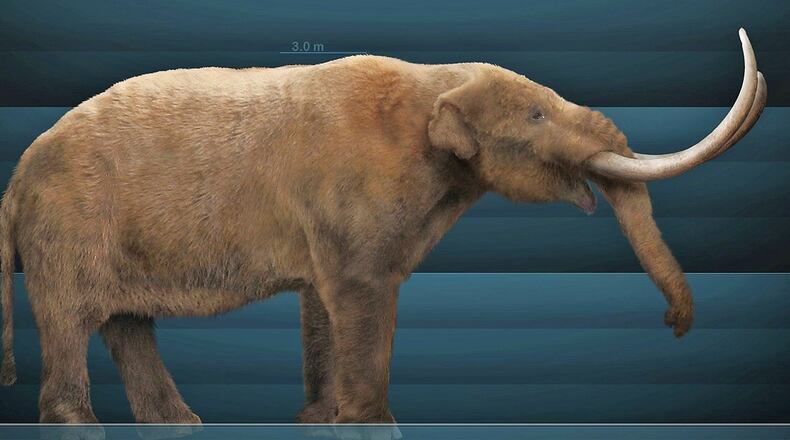Georgia’s pawpaw trees and zebra swallowtail butterflies may owe a debt of gratitude to huge extinct beasts known as mastodons. We’ll explain.
First, consider the pawpaw, a small, deciduous tree that grows mostly in Georgia’s mountains and Piedmont region. Its dark reddish brown flowers in spring have a slightly foul odor, like rotting meat. The smell and the flower color lure carrion flies and beetles that pollinate the tree.
Its fruit is another matter. The potato-size fruit, which ripens in mid-August, is edible, tasting slightly like banana custard. It provides food for wildlife and was once widely eaten by Indians and settlers and harvested for local markets.
The fruit’s disc-shaped seeds, however, are too large to be swallowed. No living North American animal can swallow pawpaw seeds whole.
The zebra swallowtail butterfly has a special relationship with the pawpaw, but not because of the flowers or fruit. Rather, the butterfly is critically dependent on the pawpaw’s foliage — the only thing its caterpillar will eat.
Thus, no pawpaws means no zebra swallowtails, gorgeous insects with black, zebra-like stripes on a whitish background.
Now, consider the mastodon, a massive, mammoth-like beast weighing more than 5 tons that lived in what is now Georgia during the Ice Age of the Pleistocene Epoch, but went extinct some 11,000 years ago. Mastodons and other huge Pleistocene mammals feasted on pawpaws and could swallow the big seeds whole, which passed undigested through their guts and were deposited far and wide in their excrement. Pawpaws sprouted from the excreted seeds.
So, although the Pleistocene creatures are long extinct, the legacies from their diets may live on in scattered pawpaw patches around the state and in zebra swallowtails that need pawpaws for survival.
IN THE SKY: From David Dundee, Tellus Science Museum astronomer: The moon will be first quarter on Sunday. Mercury is low in the west around dusk. Venus rises in the east a few hours before dawn. Jupiter is low in the west around sunset. Saturn rises in the east around dawn and will appear near the moon Wednesday night. The South Delta Aquarid meteor shower is visible this weekend in the Southeast from midnight until dawn.
About the Author
The Latest
Featured

